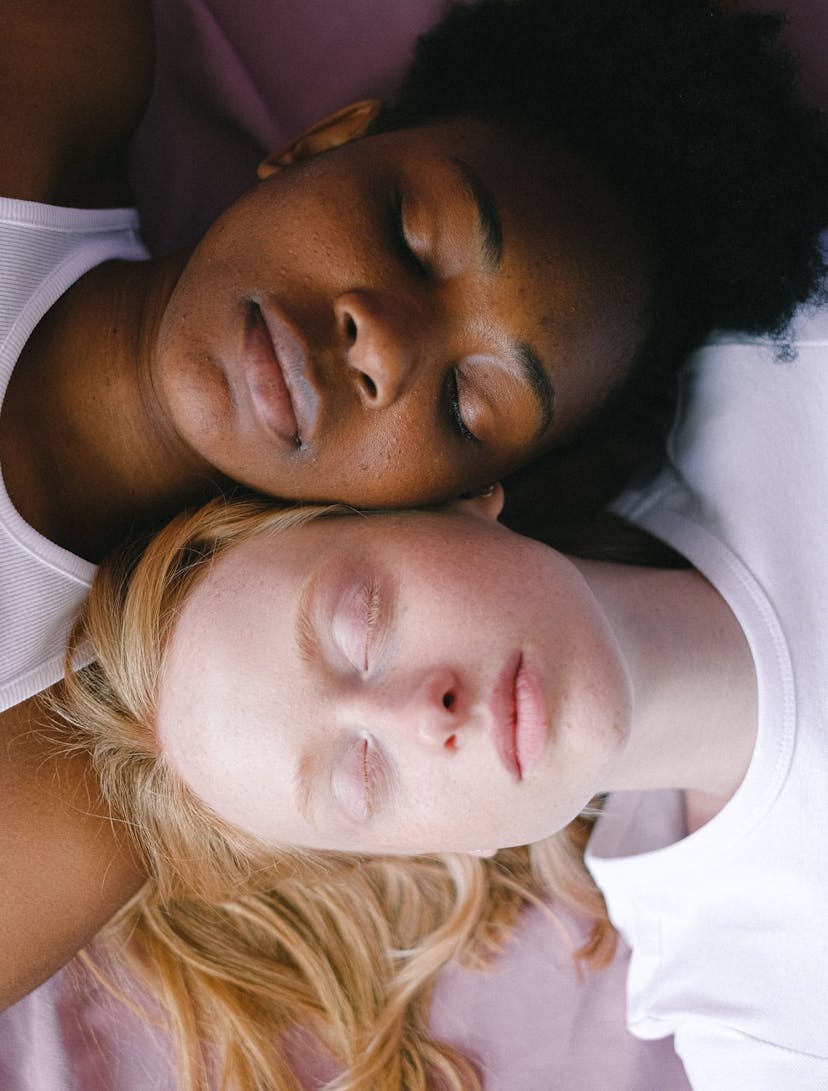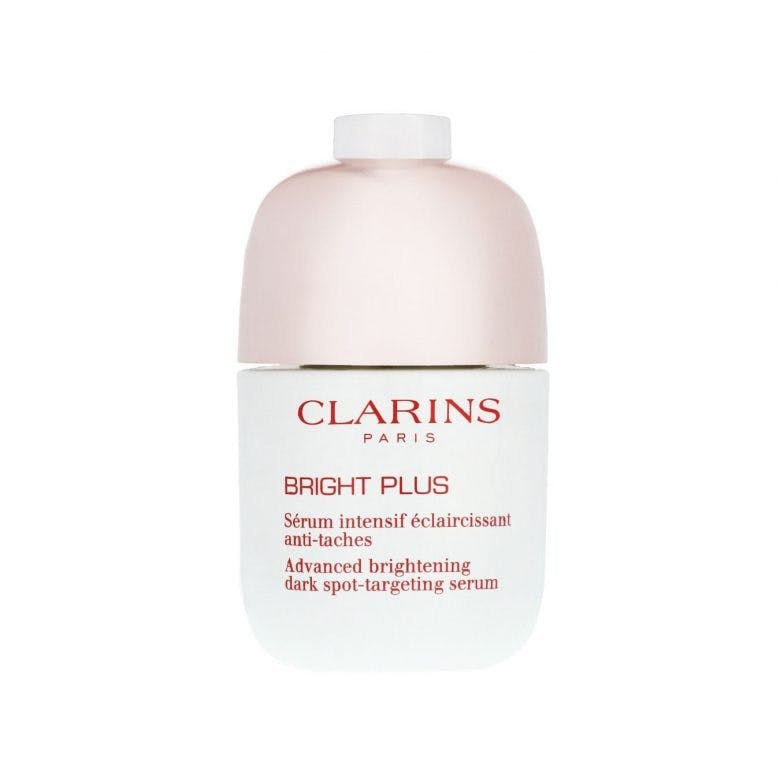How To Expertly Care For Blemish-Prone Skin
7 minutes read
The pursuit of perfect, flawless skin is something modern men and women covet. However, as humans, porcelain skin is not quite an achievable feat unless you live through camera filters only. In reality, blemishes, blackheads, breakouts, pores, bumps, veins, lines, pigmentation, scars and a whole host of other marks make us human, not robots with perfectly latex-esq skin.
According to The British Skin Foundation, a substantial number of people with skin conditions say that it affects their mental health and everyday life and often leaves them feeling embarrassed. In addition, four in five agree that their appearance is important to their general well-being.
Beauty Daily spoke to leading skincare experts to demystify blemish-prone skin and explain how to treat it from all possible angles. Here’s how to boost your skin’s confidence; let’s begin.
What is blemish-prone skin?
Blemishes are a common skin concern which will affect all of us at some point, regardless of age.
Blemishes are a collective term referred to as any imperfection or flaw you see on the skin’s surface. It can be a spot, bump, discolouration, or mark on the face.

What are the common types of blemishes and what causes them?
“The cause of blemish-prone skin will always be a combination of excess sebum and bacteria. What causes excess sebum can be hormonal, medication, or genetics.
What causes the bacteria will differ as well. Sometimes, it’s triggered by daily pollution and incorrect use of daily products, among others,” explains Charlotte McHale, Clarins Training Manager.
1. Acne
What’s the difference between acne and blemishes? Acne is a type of blemish on the skin. It is a common skin condition when pores become clogged with oil, dirt, and dead skin cells. The causes are quite varied and brought about by a series of factors: from hormonal imbalance, genes, and diet, to lack of sleep, improper skincare routine and stress.
The ‘acne’ category comprises pesky blackheads, whiteheads, papules (mild tiny red dots known as pimples), pustules (pimples with pus), nodules and cysts. A type of cystic acne is PCOS acne. If you’re suffering from this type of acne, here’s How To Deal With Your PCOS Acne, According To Experts
2. Hyperpigmentation
Another type of blemish is hyperpigmentation.
Hyperpigmentation is any area of your skin that is darker than the rest. Like acne, it is a harmless skin condition.
It can appear as a post-acne scar called ‘post-inflammatory hyperpigmentation’ or dark patches on the skin caused by hormonal imbalance amongst pregnant women called ‘melasma.’
There are multiple known causes for triggering hyperpigmentation, such as sun exposure, pollution, irritation from skincare products, the ageing process, inflammation on the skin, and allergic drug reaction to other rare medical conditions.
The ‘hyperpigmentation’ category includes age spots (ageing and accumulated sun exposure) and sunspots (extreme and unprotected sun exposure).
Read next: What Causes Hyperpigmentation And How Do You Get Rid Of It?
3. Hives
Hives are another type of blemish we all encounter due to an allergic or skin reaction. It is a skin rash that appears red, swollen, painful or itchy.
Experts say allergies are thought to be the primary cause of hives. It can occur a few minutes after you eat or drink something you’re allergic to or triggered by something in the environment or a reaction from a skincare ingredient. If you have an allergic reaction to any product, stop using it immediately and consult a doctor or dermatologist.
Read next: What is the difference between sensitive and sensitised skin?
How to look after blemish-prone skin
Understanding the common types and causes of blemishes will narrow your treatment plan. Here’s the best skincare for blemish-prone skin, according to the experts.
If you are treating acne-blemished skin, chances are you have an oily or combination skin type.
Dr Mia Jing Gao, Consultant Dermatologist at the Royal Free Hospital, London, recommends double-cleansing.
She recommends using Micellar Water followed by a gentle foaming cleanser formulated with BHAs like salicylic acid. Salicylic acid can penetrate through oil; it cuts through any sebum within the pores to deep clean and keep them unclogged to prevent acne.
Beauty Daily recommends washing your face twice daily with the Purifying Gentle Foaming Cleanser. It has pore-cleansing blue granules made with salicylic acid, which leaves skin feeling matte and pristine-clean.
McHale advises using a cleanser that is formulated for your skin type.
“Don’t assume your skin type is oily just because you have blemishes. You can still get them even if you have dry skin. It might just be hormonal. Book with a professional and cleanse according to your skin type.”
Book your free consultation: Speak with one of Clarins Beauty Coaches for a personalised virtual skincare consultation to answer all your burning beauty questions. Book here.
If you are treating a type of hyperpigmentation
Post-acne marks or sun-induced spots

Applying Bright Plus Advanced Dark Spot-Targeting Serum to spots will help fade away dark pigments. In addition, this serum has seed extract from acerola, a vitamin C-rich fruit, which helps reduce the look of dark spots.
Melasma
Unfortunately, when you’re pregnant, there’s nothing you can do to eliminate melasma, as this is due to hormonal imbalance. It will go away post-birth. Making sure you wear high SPF will prevent it from becoming a permanent issue.
Age spots
Related to ageing, sun exposure and/or hormonal drop. Specific plant and fruit extract, desert dates and hexylresorcinol are known to reduce the appearance of age spots and can be found in the Clarins’ 60 and up Nutri-Lumière Range. Applying Nutri-Lumière Day Cream every night will help reduce the appearance of age spots.
Read next: What are the common causes of age spots?
If you suffer from hives
Hive rashes usually settle down within a few minutes to a few days. However, the best way to treat them from ever occurring again is to keep track of triggers with a journal. You can also try products from the Calm Essential range, dedicated to people with sensitive skin types, as both a permanent and temporary calming measure.
The key ingredient, Clary Sage extract, is proven to harmonise with the skin as it allows it to be instantly soothed and protected, increasing the skin’s tolerance.
We recommend the Calm-Essentiel Soothing Emulsion. It is intensely moisturising while making the skin soothed, radiant, and protected. In addition, 87% of women said their itchy skin sensation was relieved with the emulsion. Discover the range here.
Taking an anti-itch medication you can buy without a prescription, such as an antihistamine, can also help.
Blemish-Prone ‘Beauty Cupboard Saviour’
Making sure you are stocked with certain skincare staples will help ward off blemishes and keep them at bay.
Moisturiser
Regardless of your skin type, applying moisturiser is necessary. Dr Gao says: “It’s a myth that oily skin does not need a moisturiser. A good moisturiser keeps the skin barrier healthy and prevents breakouts even if you have oily skin.”
Apart from helping your skin barrier seal in moisture, moisturisers are also formulated to address specific skin issues, such as helping regulate your overall sebum production, reduce the appearance of hyperpigmentation, and soothe sensations of skin discomfort. Pick the one your skin needs.
Read next: 8 Skincare Myths To Avoid, According To Experts
Spot treatment
“It’s helpful to use products with anti-inflammatory ingredients such as salicylic acid in My Clarins CLEAR-OUT Targets Imperfections, or benzoyl peroxide,” says Dr Gao.
These ingredients reduce redness and blemishes and improve the appearance of pores. “Apply this to areas prone to blemishes. However, these products can cause dryness and irritation, so they should be used with moisturiser. It can be used a few times a week or daily if tolerated,” she advises.
Retinols
“The most effective treatments for blemishes are prescription creams. Products containing ingredients from the retinoid family can reduce skin’s oiliness over time and improve the complexion and quality of the skin. Retinoids should be a staple on anyone’s beauty cupboards. I recommend applying this at night,” Dr Gao says.
Beauty Daily swears by nature’s retinol, organic harungana, a plant-based active ingredient, which has been shown to work 40% more effectively than the far better-known retinol. Find it in the Super Restorative Range.
Tea tree oil
Gail Warren, Aesthetician and Nutritional Therapist, says tea tree oil can be another effective treatment. A study found that tea tree oil has both anti-inflammatory and antimicrobial properties. This helps with treating pimples.
“A few drops of tea tree oil mixed with wheat germ or rosehip oil (5% to 15% preparation) used sparingly at PM. Make sure to do a patch test before applying new skincare products on the entire face,” she advises.

Or try Carbon Theory’s Tea Tree & Citric Acid Breakout Control Facial Purifying Tonic – it’s deep cleansing, refines pores, and the tea tree kills bacteria.
Facial Clay Mask
“You can help reduce inflammation and swelling by using SOS Pure Rebalancing Clay Mask. It has Alpine Willow Herb, a great ingredient to help reduce inflammation,” McHale advises. Leave for 10 minutes and use once or twice a week.
Sign up for our newsletter
We will keep you in the loop for special offers, exclusive gifts and product news.

